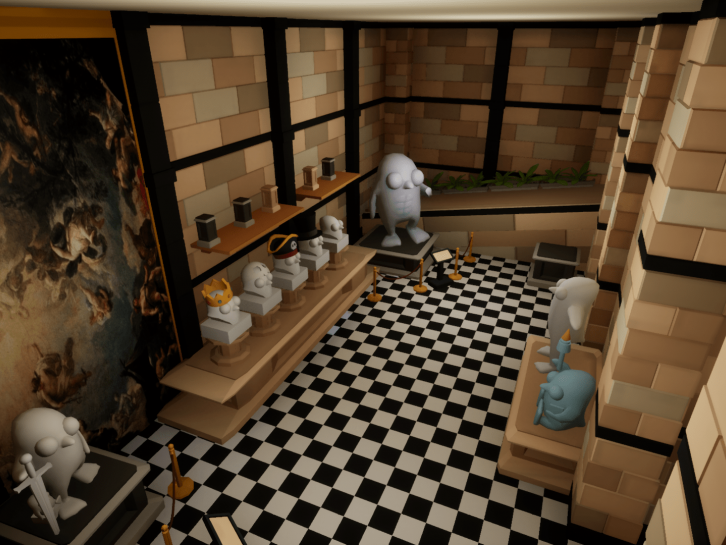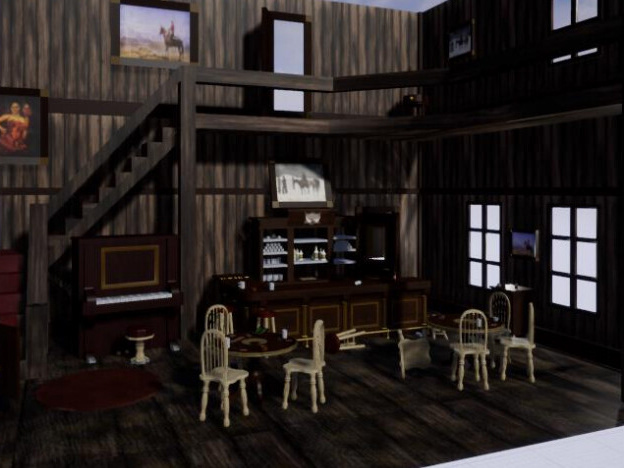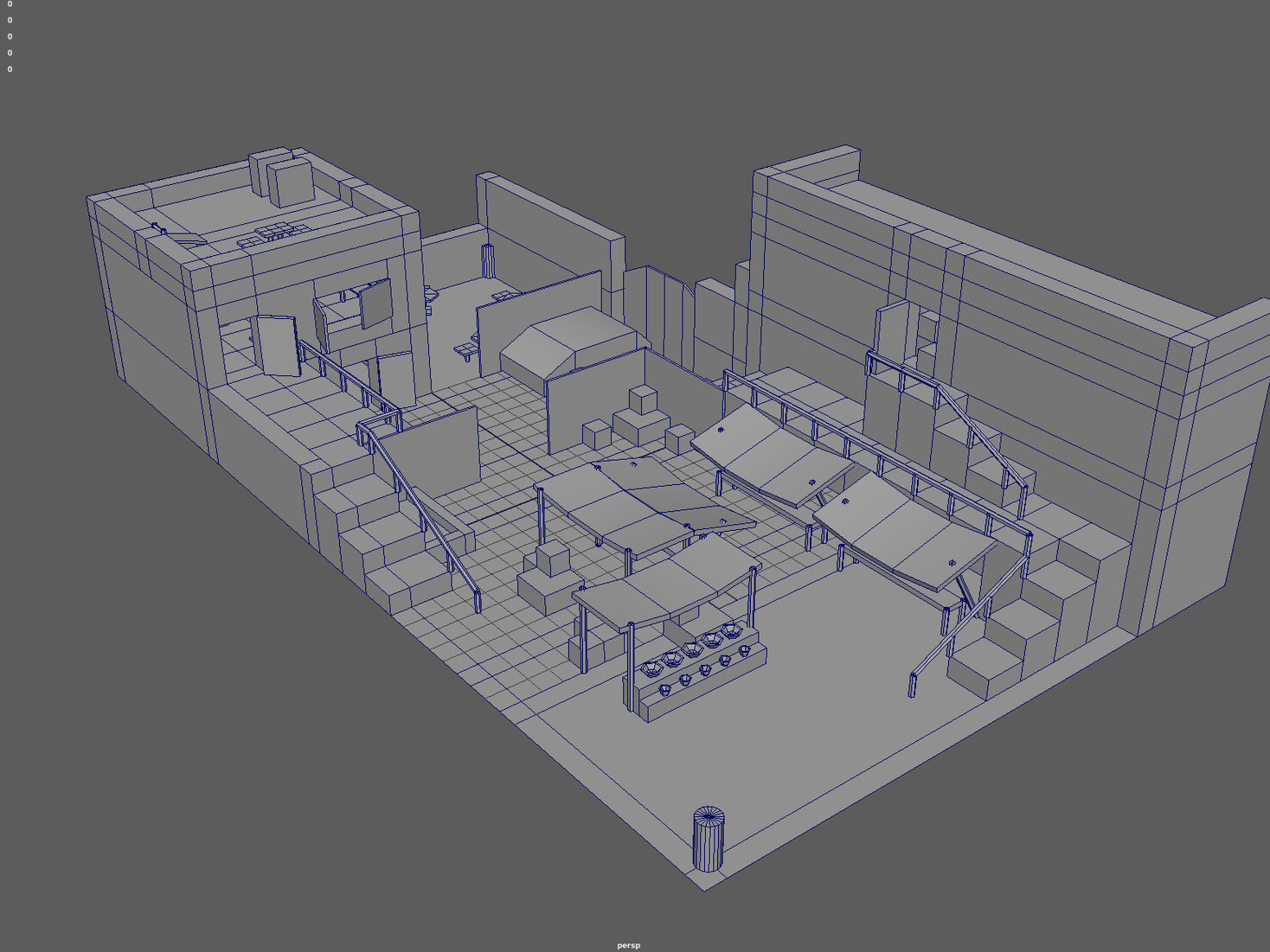Study Purpose
This project was an investigation into how designers can plan for chaotic gameplay in a controlled way.
The study aimed to understand what constituted a chaotic experience in the eyes of players, how to replicate that, and how to iterate upon and balance chaos in ways which do not render the player experience stale.
To do this, maps from several first person shooter titles were examined as reference.
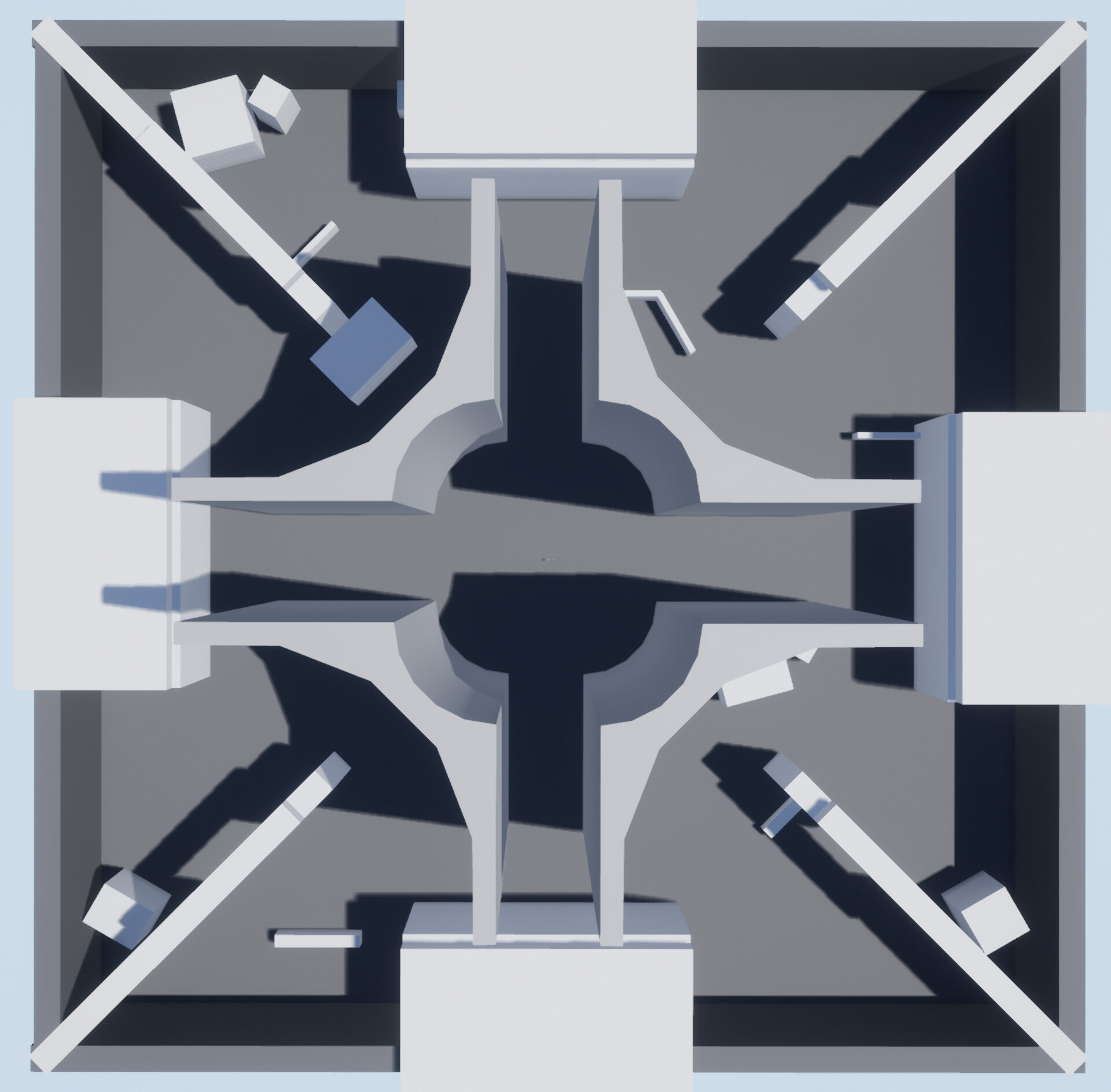
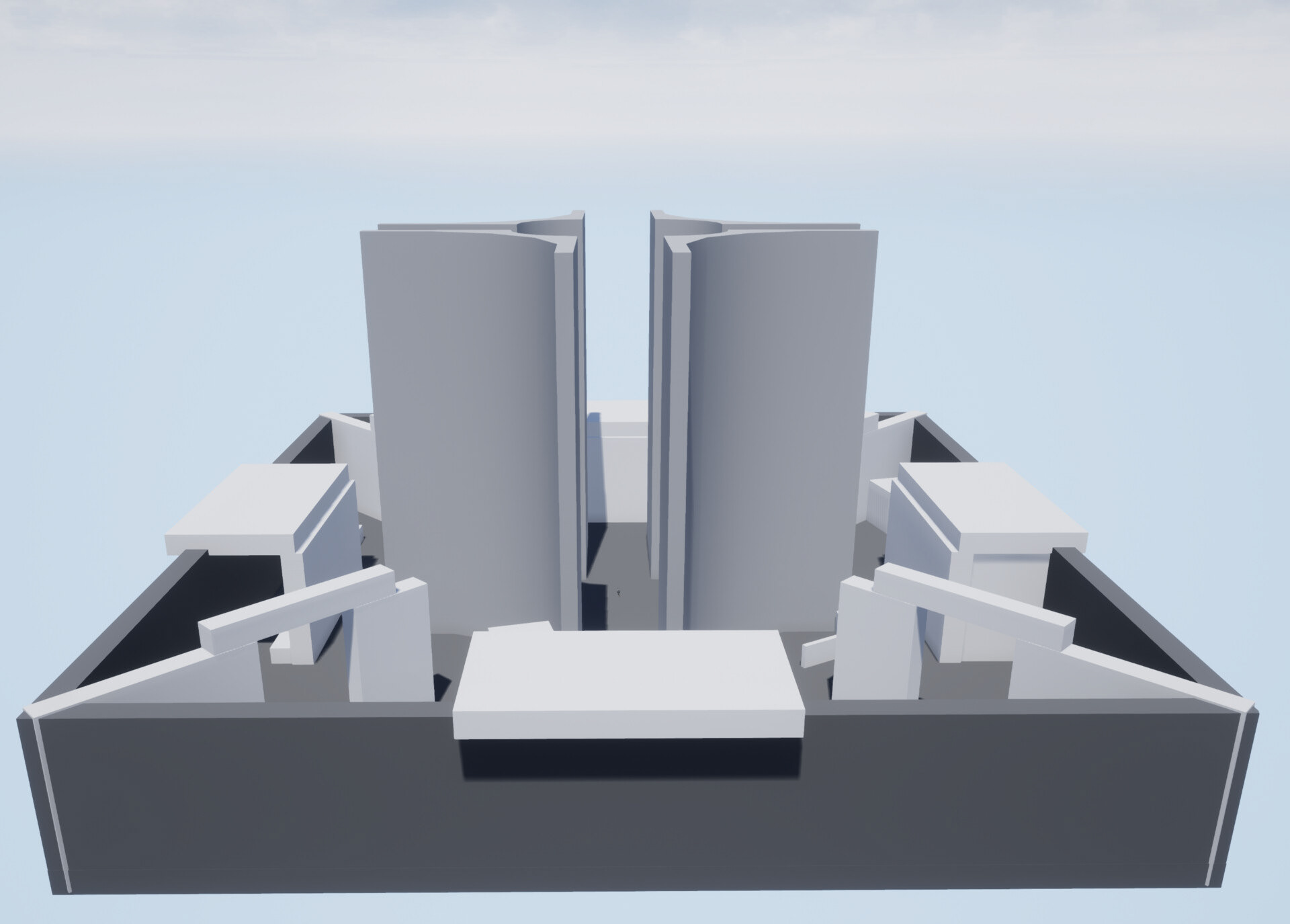
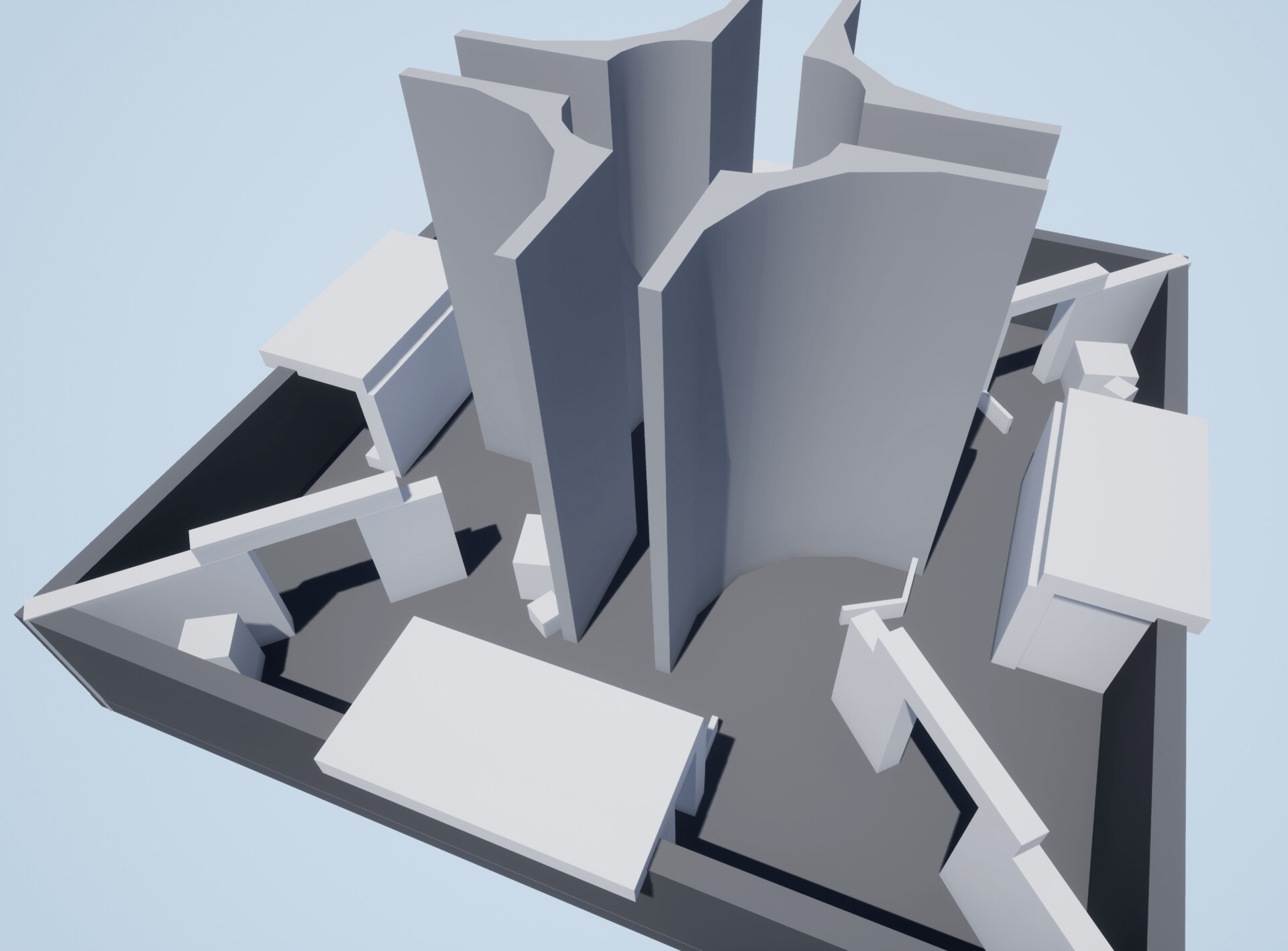
Designing for Chaos
This project's aim was to develop an understanding of factors which made multiplayer levels for shooter titles "chaotic".
To understand what made a level feel chaotic to players, and how this chaos could be controlled, I researched levels from various FPS and TPS titles.
This research highlighted over lapping factors within specific levels in each franchise that promoted chaotic gameplay.
Each level was either a small confined space, or featured a location within the map that forced players into a shared kill box or bottleneck. These spaces were designed in a way that kept players under constant threat through a lack of rear cover, overlapping lines of sight, overlapping player routes, promoted the use of explosives or close quarters weaponry, injected lots of players into one area at once to reduce time to kill, and re-spawns were often adaptive to enemy player locations.
Taking the inspirations of the researched maps on board I designed a confined 6vs6 player map for an FPS title with the mechanics of Call of Duty.
Promoting Constant Combat
To encourage continual movement and cause players to regularly need to avoid harm or become engaged in combat I made use of curved architecture and angular line of sight blockers. Curved walls removed spaces in which players could anchor themselves and feel safe. By removing stationary safety, players would be driven to keep moving and avoid becoming pinned down or flanked.
I utilized this within the exterior and interior of the central structure. The interior curves created a four directional bottleneck in which players could obscure themselves from an entrance tunnel without gaining cover against the other three entry points. This balanced movement through the center as it had higher threat than the map exterior but was the fastest means of traversing the level.
Once this change was added the map had a series of kill boxes which were uniformly distributed in each exterior quarter.
To diversify these kill boxes I added angular wall sections in each quarter of the map. The door ways within these walls broke up lines of sight for players emerging from the box rooms on each map edge or from the center structure.
These doorways were lined up in relation to one another so that players within a doorway could get line of sight on one another, but once the door was passed through combat would become close range between players within the same kill box.
Influencing Player Movement Routes
The kill box door ways, combined with the curvature on the exterior of the center structure, and box rooms on each map edge, were framed in a way which would influence movement in figure eight patterns around the map.
Moving in this way would allow players to balance cover with optimal lines of sight upon the enemy team. This gave players control over threats ahead of them whilst maintaining the intended threat level from adjacent or rear opponents.
Map Memorization
Another observation of maps deemed chaotic was that they could be fully memorized after the first play, and that player mastery came in how players responded to the behavior of the enemy team. I aimed to capture that in my own design.
A common way to achieve that was by making the map asymmetrical. Players would be able to efficiently memorize each area and the safest ways to move around or into combat, wherever it may be.
I added place holders for small assets which would offer half covers to players. The placement of these cover objects was unique to each quadrant of the map to bolster memorization and tactical navigation.
I edited the box rooms on each side of the map to further support this idea, and offer line of sight breaking paths which players could use to escape through. I set these up so that two used a shared entry and exit point, the remaining two rooms could be passed through fully.
The closed rooms forced players to move into open areas with multiple overlapping lines of fire from a single position. This added two camp-able locations to the map but ones which would be easily overwhelmed in a map with such a low time between respawning and regrouping to counter attack.
Objective Driven Play
Once these iterations were complete I plotted objective locations within the map in a way which would further the goals of the project. Players were intended to spawn in 2 teams, one team on B and one on C as can be seen below. This would instantly drive teams into combat and create a rush for objective A or an opening attack on the opponent point.
Players would not have initial line of sight on one another from their spawn points and would funnel into the center structure of pass through the box room between C and B. These areas would become instant combat zones before respawning opened up to locations around the entire map.
Randomized respawning rather than team start specific respawns would drive constant flanking from spawn and increase time frames between spawning and combat.
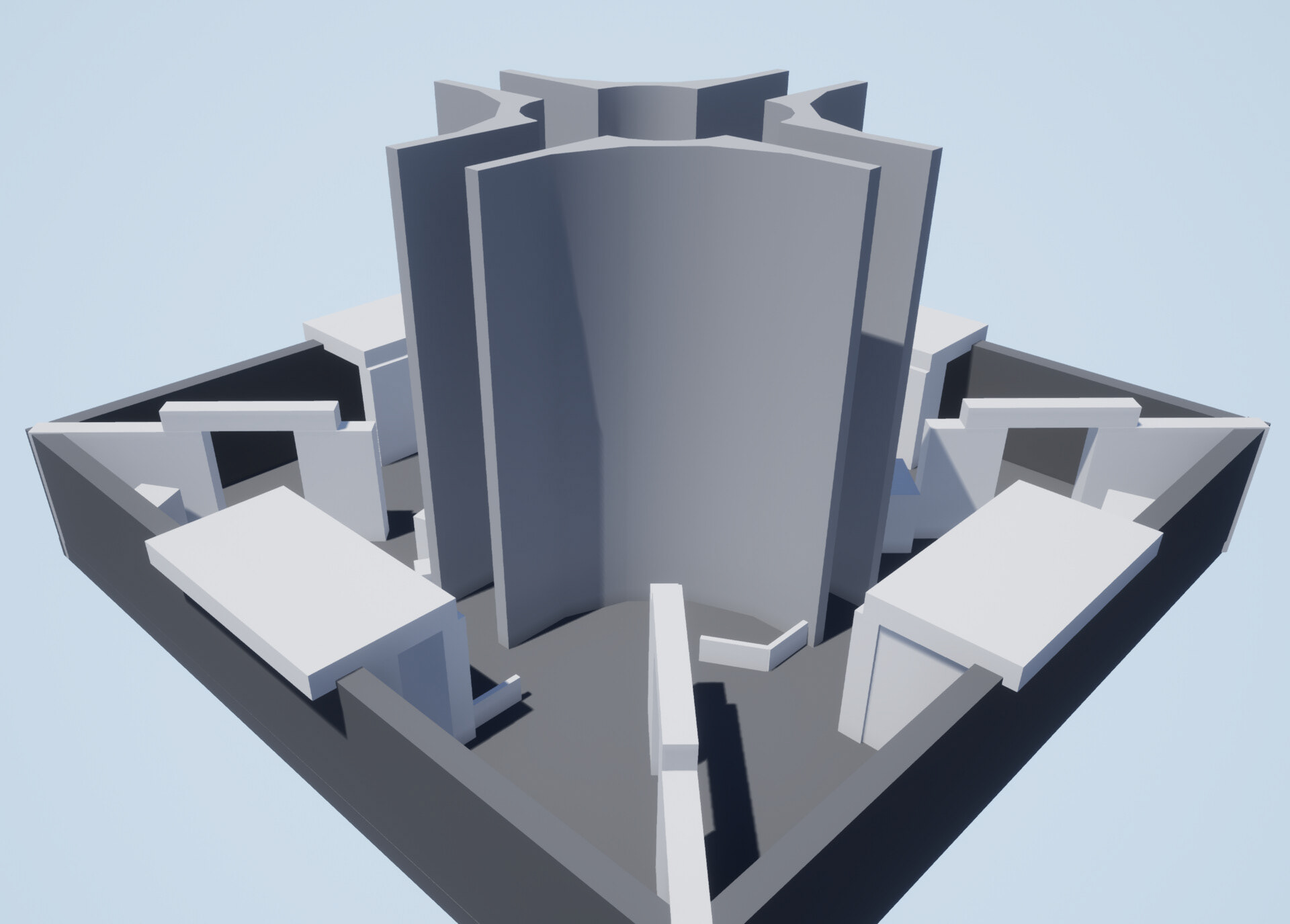
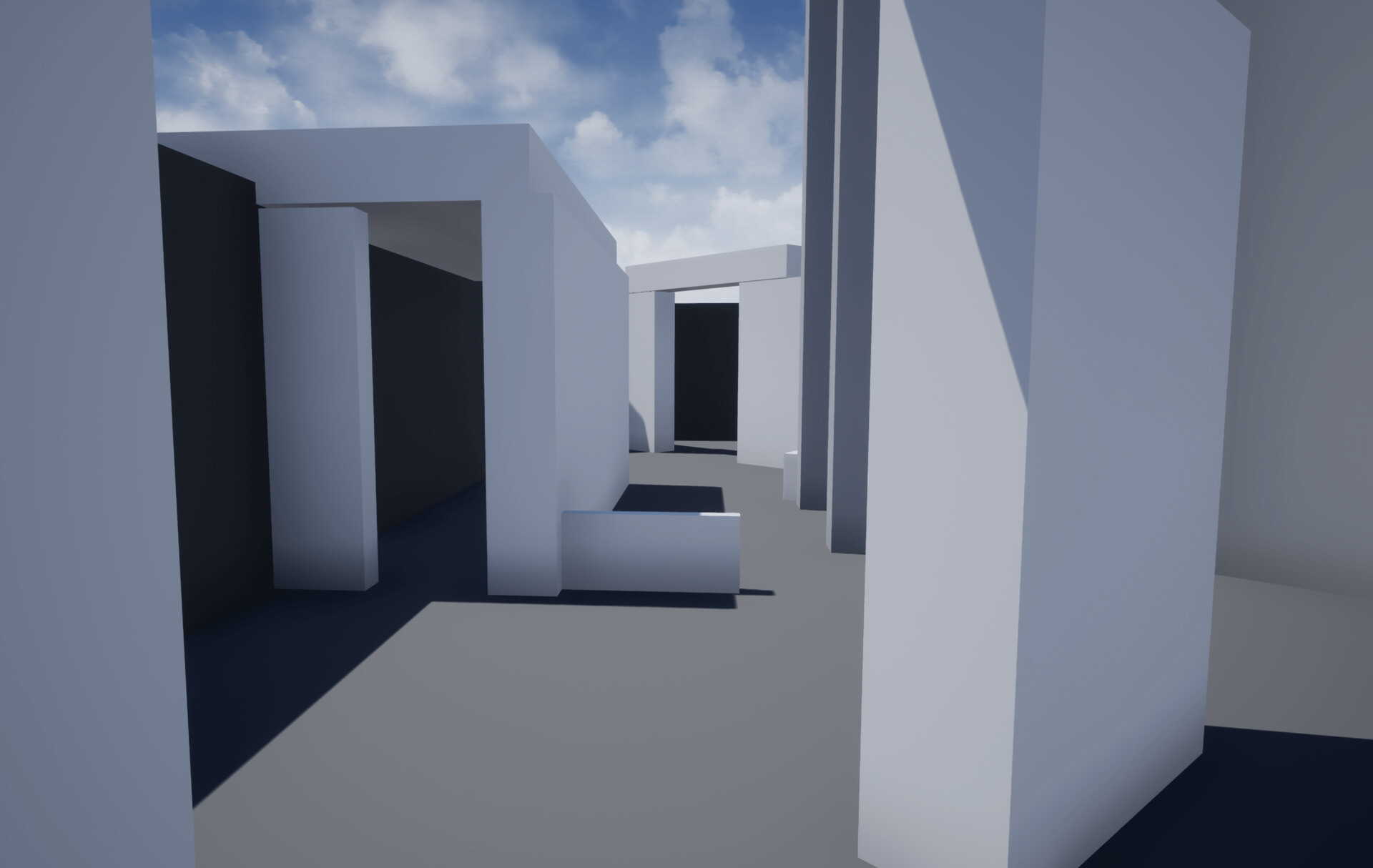
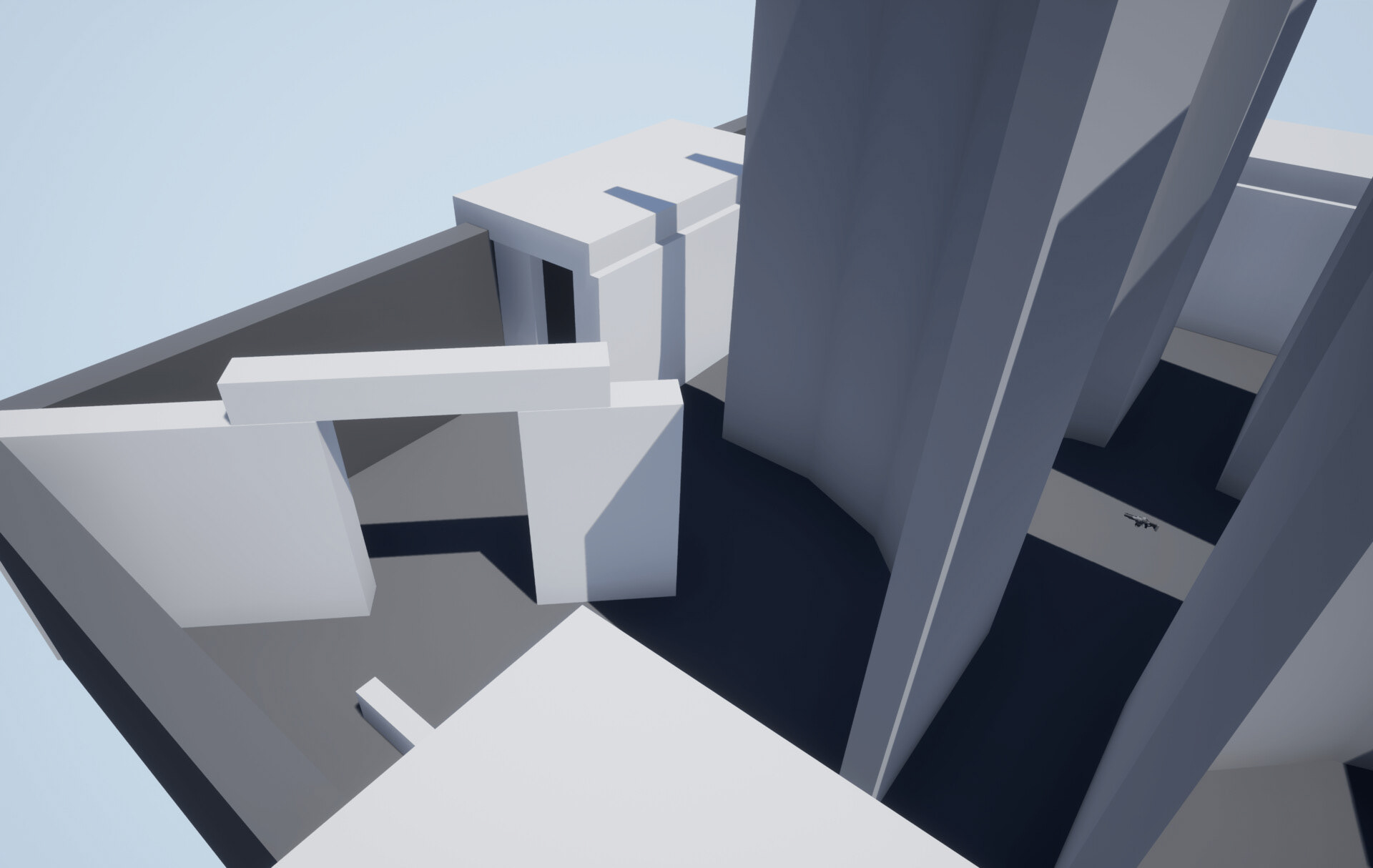
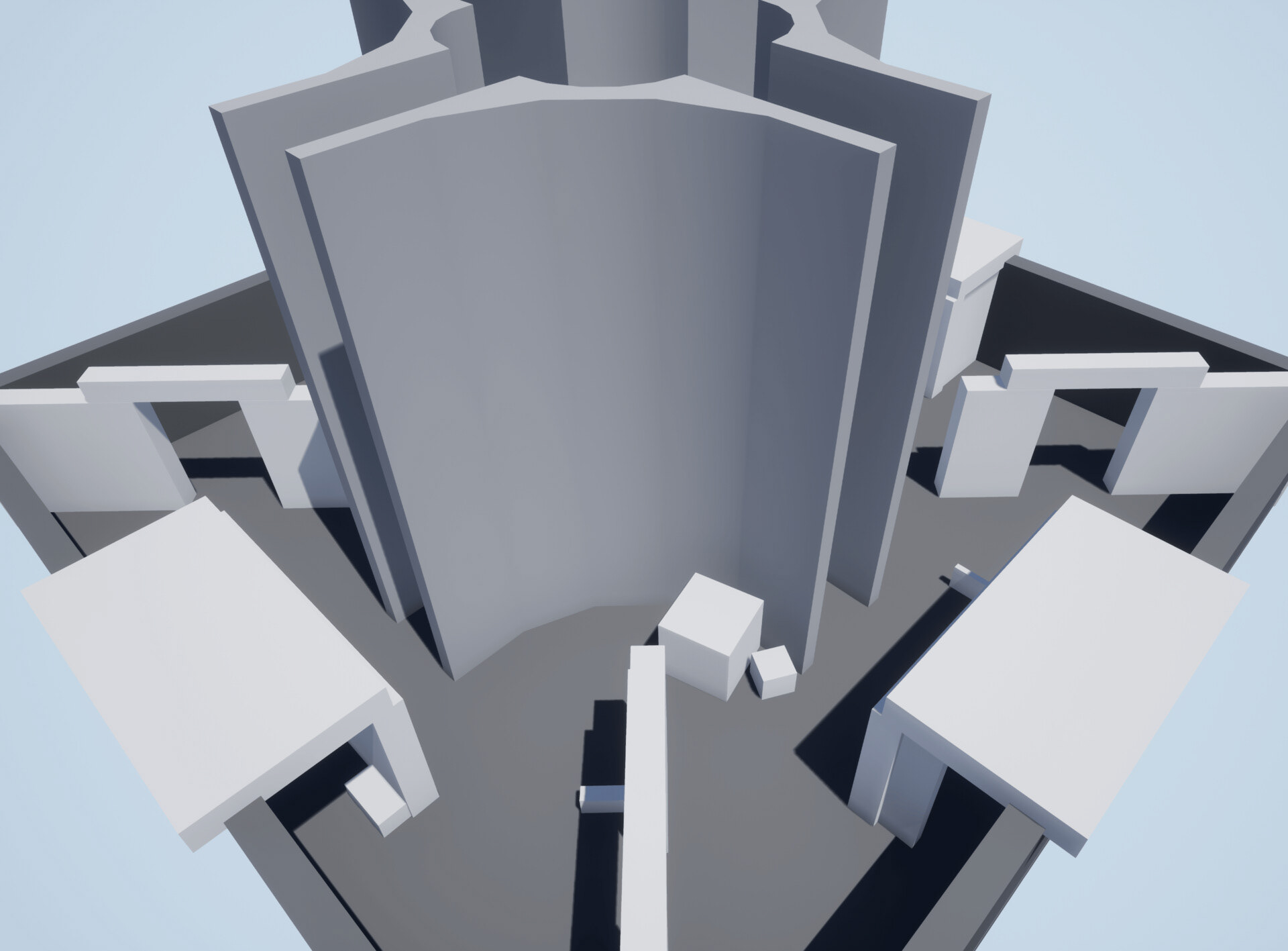
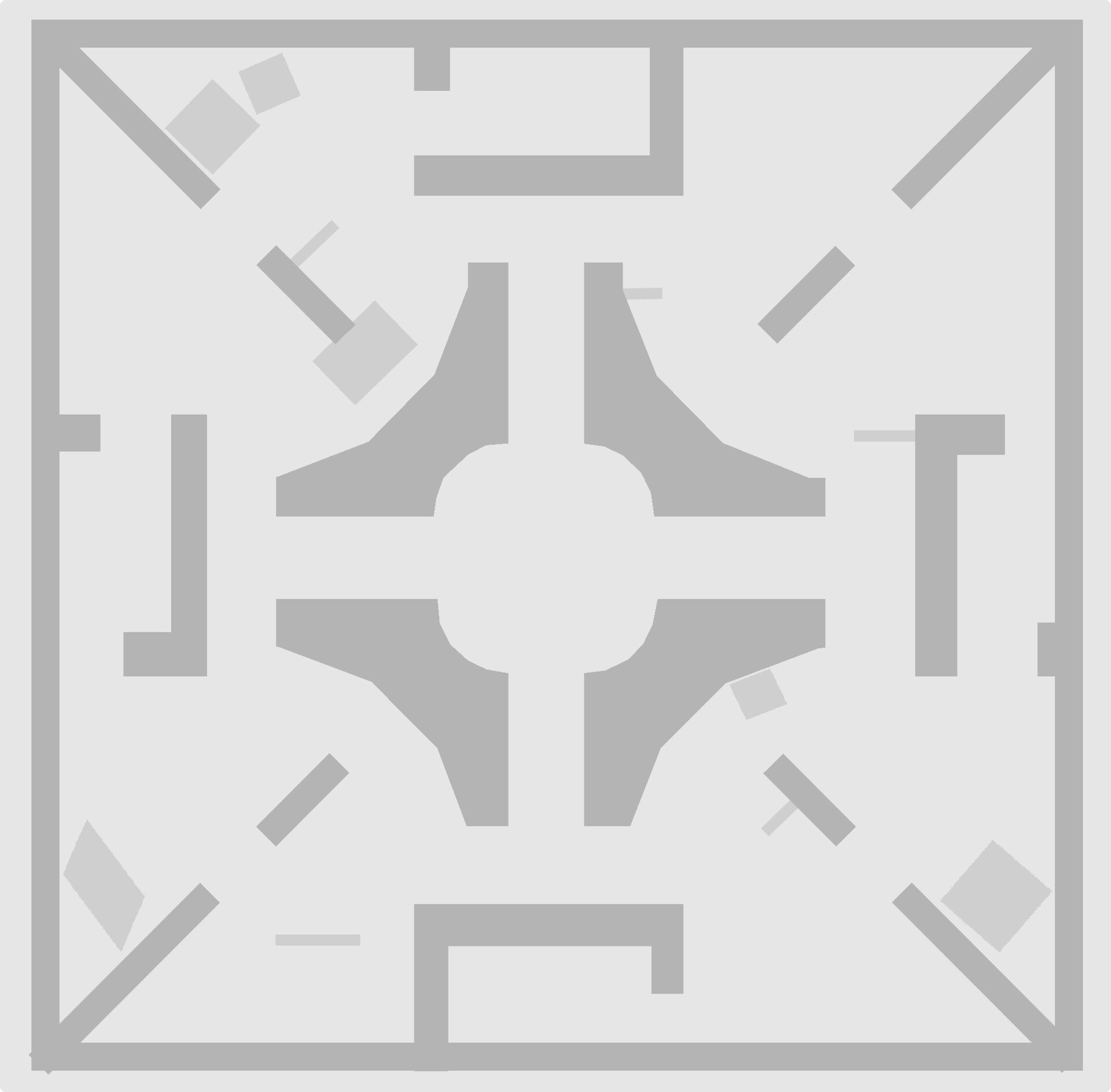

Project Evaluation
The project taught me a lot on what shape theory and composition can achieve within a competitive shooter level design environment.
I gained an insight into how players passively engage in map memorization constantly and how to make that process easier for them so that their focus can remain on gameplay.
I'd expand this project in future by rebuilding the layout in a level editor for a shooter title or setting up a playable experience against bots in unreal engine. It was hard to discern the playable outputs of this project without multiplayer live testing.
I did test in engine for timings, navigation, and lines of sight, but these don't compare to what the experience would be with live testers.


